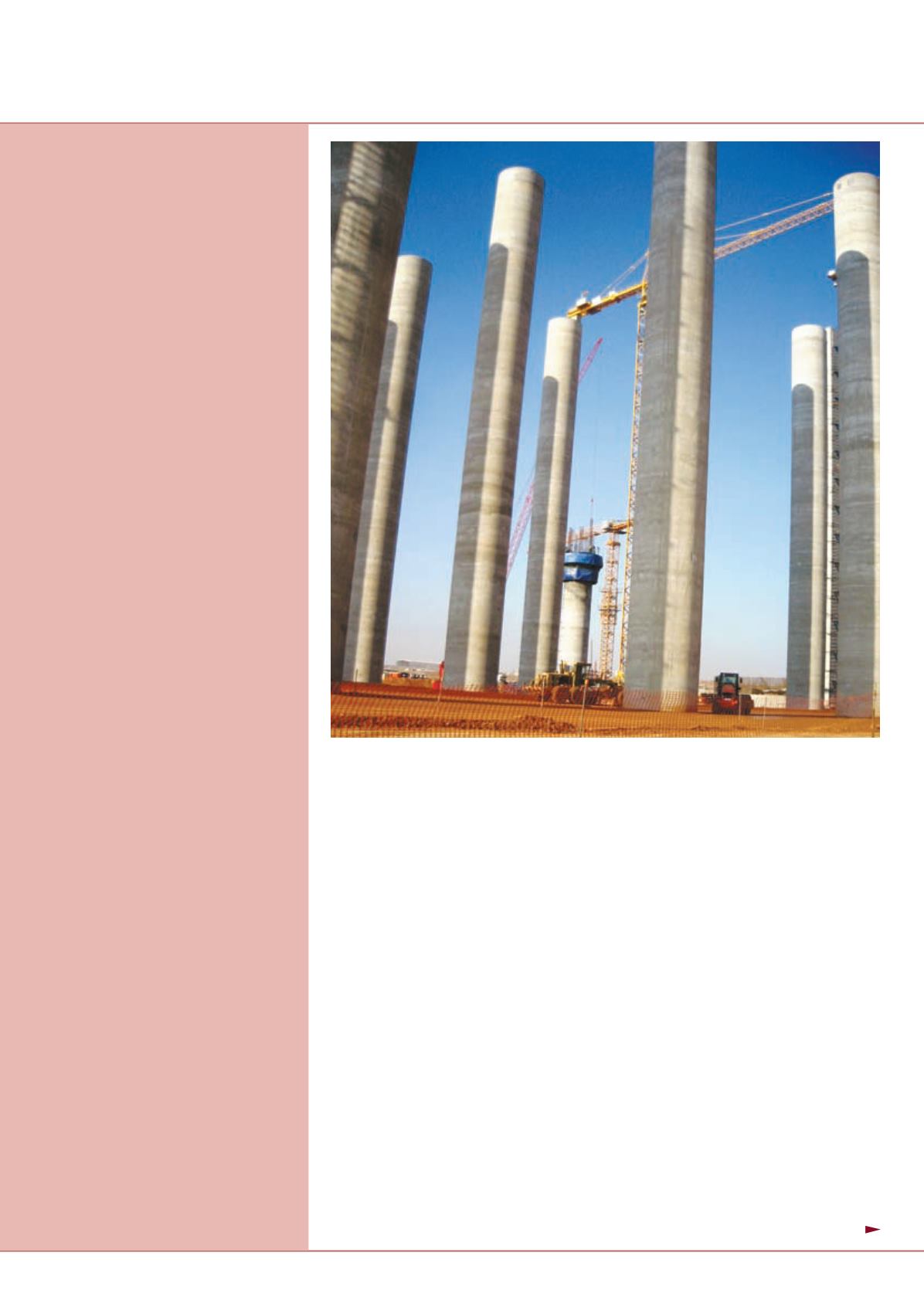
26
international
construction
Türkiye
Ekim
2013
English translation
İnşası devam eden Medupi kömür santralindeki kazık çalışmaları. Fotoğraf: Eskom
Güney Afrika’dan olumlu işaretler
Bölge raporu
Slow payment
The competition issue also made it difficult
for the industry to take up its own issues with
South Africa’s government, including the slow
implementation of contracts and even tardier
payment for work delivered.
Last year, for instance, contractor Sanyati
closed the lid on its empty coffers and filed
for bankruptcy after millions in outstanding
payments for as many as 23 government
contracts were not paid. More than 2,500 jobs
were lost in the debacle. At the same time,
promised projects are simply not happening.
“It does not bode well for the industry when
projects are not being signed off,” Ms Dlamini
said. “This is affecting growth because we
depend on government to support industry.”
She added that industry leaders were keen to
rebuild their relationship with government.
“This is something we need to talk to
government about. The CEOs of the biggest
companies want dialogue.”
It cannot happen too soon. The industry was
relatively insulated from the credit crisis of
2008 by the race to complete infrastructure
for the 2010 World Cup. But as the jobs were
signed off, companies found themselves
sitting with excess capacity and dwindling new
contracts.
Earnings at South Africa’s biggest construction
group, Aveng, fell 58% in the 12 months
to June last year, reflecting industry-wide
doldrums.
However, there are signs of an improvement.
First National Bank (FNB) and the Bureau
for Economic Research said that their latest
construction confidence index had jumped from
36 index points in the last quarter of 2012 to
51 points in the first quarter of 2013. This was
the highest reading of the index in four years.
Sizwe Nxedlana, chief economist at FNB, said
the surge was a result of restored profitability
in the construction sector.
“Construction firms have been able to restore
profitability following a prolonged period
of intense margin pressure,” Mr Nxedlana
said. “However, this could be constrained if
construction activity growth continues at the
slow pace seen in the first quarter of 2013.”
Ms Dlamini added that the numbers appear to
reflect the mood on the ground, “We have not
seen this kind of growth for a while now. We
hope this will continue.”
Large projects
Much of the hope is pinned on large state-
funded projects. The ruling African National
Congress is under pressure to improve
economic growth and, especially, to create
jobs – a quarter of the country’s working-age
population are currently unemployed.
Last year, it announced an almost US$400
billion infrastructure programme to be rolled
out over the next two decades, with almost
US$85 billion to be spent within the next
three years. The projects will be split between
various government departments and state-
owned enterprises, such as logistics company
Transnet and national electricity utility, Eskom.
The government will also spend US$43 billion
>
bulunduğu tufanın göstergesi sayılabilir.
Yine de iyileşme işaretlerinin varlığından
da söz etmeliyiz. Birinci Ulusal Banka (FNB)
ve Ekonomik Araştırmalar Dairesi, 2012 son
çeyreğinde 36 olan inşaat güven indeksinin
2013 ilk çeyreğinde 51’e sıçradığını açıkladı.
Bu, indeksin son dört yılda ulaştığı en yüksek
değer oldu. FNB baş ekonomisti Sizwe
Nxedlana, inşaat sektörünün tekrar kârlı hale
gelmesinin bunda başrol oynadığını belirtti ve
şunları ekledi:
“İnşaat şirketler, kâr oranları üzerinde
uzun süren bir baskının ardından tekrar kârlı
günlerine dönmeye başladı. Ancak, inşaat
faaliyetlerindeki büyüme hızının 2013 ilk
çeyreğindeki gibi düşük kalmaya devam etmesi
durumunda bu eğilim kısıtlı kalabilir.”
Tumi Dlamini ise, rakamların sahadaki
durumunu yansıttığı belirtiyor ve “Bir süredir bu
tip bir büyüme görmemiştik. Bu eğilimin devam
etmesini umuyoruz.” diyor.
Büyük projeler
Umutların büyük bölümü, devlet tarafından
finanse edilecek büyük ölçekli projelere
bağlanmış durumda. İktidardaki Afrika Ulusal
Kongresi, ekonomik büyümeyi artırma ve
özellikle de istihdamı artırma yönünde bir
baskıyla karşı karşıya. Zira, ülkede çalışma
yaşındaki nüfusun dörtte biri işsiz.
İktidar partisi, geçtiğimiz yıl toplam
tutarı 400 milyar $’a yaklaşan bir altyapı
programı açıkladı ve programın yirmi yıllık bir
dönemde hayata geçirileceğini, önümüzdeki
üç yılda ise 85 milyar $harcanacağını belirtti.
Projeler, çeşitli hükümet organları ve devlet
kuruluşları arasında paylaştırılacak. Lojistik
firması Transnet’i ve ulusal elektrik tedarikçisi
Eskom’u örnek gösterebiliriz.
Hükümet, aynı zamanda okullar, hastaneler,
klinikler, barajlar, su ve tesisat projeleri için
de 43 milyar $ harcayacak. Maliye Bakanlı
Pravin Gordhan’a göre, elektrik şebekelerinin
genişletilmesi ve bir milyondan fazla yeni
konuta elektrik temin edilmesi, yeni mahkeme
ve cezaevlerinin inşa edilmesi, otobüs, yaya ve
karayolu bağlantılarının iyileştirilmesi için de
önemli kaynaklar ayrılacak. Bu projeler, büyük
ölçüde belediyeler ve il idareleri eliyle yürütülecek.
Devlete at hizmet şebekelerinde de iddialı
projeler bekleniyor. Örneğin, Transnet kuruluşu,
ülkenin doğu kıyısındaki eski Durban


